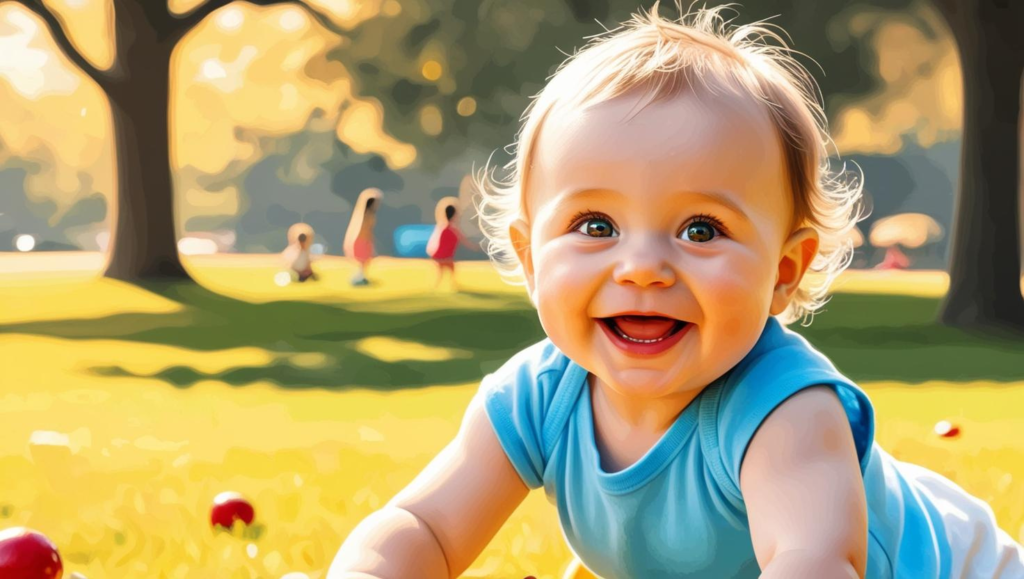
Ever watched your toddler burst into tears over a broken cookie or jump with pure joy at seeing a puppy? Your little one is learning about feelings, and what a journey it is! Let’s explore how toddlers learn about emotions and how you can help them along the way.
How Toddlers Experience Feelings
Your 1-2 year old feels everything strongly. Think of it like this: they’re experiencing every emotion for the first time! When they feel happy, they’re REALLY happy. When they’re sad, they’re REALLY sad. It’s all new and exciting (or sometimes scary) to them.
Common Feelings in Toddlers:
- Super happy and excited
- Really sad and upset
- Mad or frustrated
- Scared or worried
- Shy with new people
- Proud of new skills
Why Do They Have Such Big Reactions?
Your toddler’s brain is like a scientist learning about the world. When they cry because you gave them the blue cup instead of the red one, they’re not trying to be difficult. They’re just learning about what they like and don’t like, and they don’t know how to handle these big feelings yet.
Things That Might Upset Your Toddler:
- Changes in their daily routine
- Not getting something they want
- Having to share toys
- Being tired or hungry
- Meeting new people
- Loud noises or new places
How Toddlers Show Their Feelings
Since toddlers can’t use many words yet, they show their feelings in other ways:
- Making happy or sad faces
- Using their whole body (jumping, stomping)
- Crying or screaming
- Hugging or pushing away
- Looking at your face to know how to feel
- Using simple words like “no” or “mine”
Helping Your Toddler With Feelings
Kids who learn about feelings when they’re little usually handle their emotions better when they’re bigger. Here’s how you can help:
Name Their Feelings
When your toddler is upset, try saying:
- “You look sad because your tower fell down”
- “I see you’re excited to go to the park!”
- “You seem mad that it’s bedtime”
Show That All Feelings Are OK
- Give hugs when they’re upset
- Tell them it’s fine to feel mad or sad
- Stay calm when they have big feelings
- Share your own feelings in simple ways
Help Them Feel Better
Try these simple tricks:
- Take deep breaths together
- Give them a favorite toy
- Sing a happy song
- Go for a walk
- Offer quiet time together
Fun Ways to Learn About Feelings
Try these activities with your little one:
- Make silly faces in the mirror together
- Read books about feelings
- Play with dolls or stuffed animals
- Draw happy and sad faces
- Sing songs about feelings
- Play peek-a-boo with different emotions
When to Ask for Help
Talk to your doctor if your toddler:
- Seems sad most of the time
- Gets upset very easily and stays upset for long times
- Doesn’t smile or laugh much
- Doesn’t like to be held or touched
- Seems scared of everything
Remember These Important Things
- Every child grows at their own pace. Some kids have bigger feelings than others, and that’s perfectly normal!
- Your toddler isn’t giving you a hard time – they’re having a hard time. Big feelings are new and scary for them.
- The way you handle your toddler’s feelings now helps them learn how to handle feelings later.
- You’re doing a great job! Even reading this article shows you care about helping your little one grow.
Quick Tips for Tough Moments
- Take a deep breath yourself
- Get down at their eye level
- Use a calm, gentle voice
- Give them words for their feelings
- Offer comfort and understanding
- Remember this phase won’t last forever
The most important thing is showing your toddler that you love them, even when they have big feelings. When they know their feelings matter to you, they learn to understand and handle their emotions better.
Your toddler’s super-sized reactions won’t last forever. Each day, they’re learning more about their feelings and how to show them. Keep being patient, loving, and understanding. You’re helping them grow into an emotionally healthy person!
Remember: You don’t have to be perfect. Just being there and trying to understand your toddler’s feelings makes a huge difference. You’ve got this!
